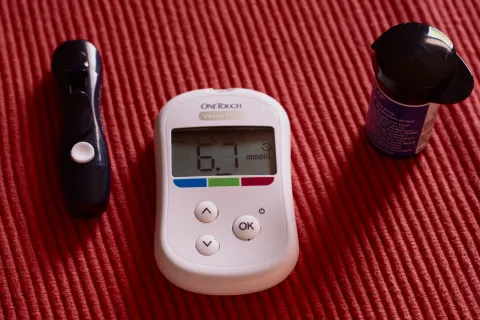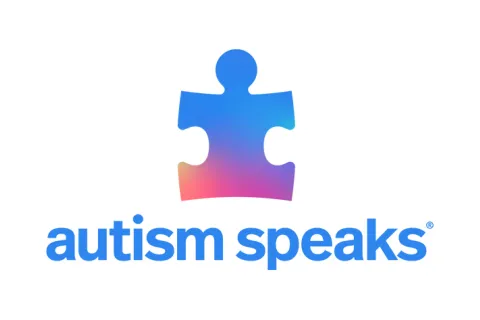Making sense of autistic meltdowns in adults
What is a meltdown?
A meltdown is a physical reaction to an overwhelming emotional or sensory experience. Autistic adults across the spectrum are vulnerable to them due to social, communication and/or sensory differences. While meltdowns can look like tantrums to those on the outside, they are not a behavioral response to manipulate a situation or to achieve a desired outcome. They are an involuntary, visceral response and feel like a loss of control by the person having one.
An autistic adult may express this loss of control by crying, screaming or physically lashing out. Or they may lock themself in a room, run away or shut down, even lose basic skills like their ability to speak. For some, meltdowns can reach crisis levels and include self-harm and suicidal ideation. Many autistic adults have trouble thinking and with their memory during a meltdown, and may not even recall their episode.
What causes meltdowns in adults?
Sometimes meltdowns have a single triggering event. Other times meltdowns occur after a series of smaller events pile up and become too much to handle.
Sensory dysregulation – too much or too little sensory input – is one of the most common causes behind a meltdown. Sounds, textures, smells, light, movement or lack of them can become so overwhelming, an autistic person’s mind can be thrown off balance. Changes in routine and other sources of anxiety, like social interactions or anticipating high-stress events can also be triggers. Meltdowns are common too in situations when communication is challenging, and it is difficult to express needs to others and get support. Sometimes a meltdown is the only way a person has to express that something is wrong.
Some situations might make an autistic person more vulnerable to a meltdown and less able to cope with triggers. Among them are situations involving increased social interactions, higher demands on executive function or a time of mental or physical illness.
Autistic adult perspective: Imploding vs exploding by Brigid Rankowski
Many people think of meltdowns as very explosive, but for me it tends to be more implosive. I’m a very verbal person in my daily life, and I do my best to choose words that accurately represent what I mean or think. However, when I get stressed, my words come out way more emotional, if I can even make words at all. There are times where the world will just be too loud, and when I was younger, like in my 20’s, I would just sit down wherever I was and put my hands over my ears.
I could hear people around me, but wasn’t able to communicate, “Hey, I’m feeling too many things at once and don’t know how to help myself.” People around me would often assume I was on drugs, and I’d hear their comments, which would only make my emotions feel more overwhelming.
As I continued to get older, I learned my personal “cues” of when to leave situations before I get too overwhelmed and how to best support myself in situations where I may encounter stressful stimuli. One of the best things I’ve learned to do is also schedule enough recovery time for myself so that I don’t become too overwhelmed with everyday life.
How can you prevent autistic meltdowns?
The way to avoid meltdowns may seem simple — avoid triggers. But that isn’t always easy or possible. The good news: planning for and predicting them can help prevent them. The bad news: it usually takes having a meltdown to help predict a future one.
When you feel ready after you have recovered from a meltdown, create a behavior log of the time, place and surroundings when your meltdown happened. Try to include as many details as possible — your sensory experiences, any routine changes, sources of anxiety, communication challenges and vulnerabilities. Most people find they had signs of a pending meltdown. Maybe you found it hard to sit still or you felt like you were about to cry. Maybe you just didn’t feel like yourself. Note your feelings. They matter in helping you manage going forward.
Once you can identify your triggers, you can start to plan ahead for ways to cope. You might structure your day to include breaks, pack sensory fidgets or headphones when you leave your house or place of comfort, or call a venue in advance to ask about accommodations, like quiet spaces.
When planning, think about how long it took you to relax to your normal state after your meltdown. Was there anything that helped you? Was there anything you wish you had in place to help you?
The better you understand your own needs, the more you can help yourself and even those around you to understand how they can support you.
If you exhibited extreme behavior or had trouble calming down after a meltdown, and/or you are experiencing frequent meltdowns, you should reach out to your medical provider for a physical to make sure you do not have another co-occurring condition contributing to your distress. You may also want to find a behavioral or occupational therapist or other mental health provider to help you with emotional and sensory overload. If you are engaging in self-harm or have suicidal ideation, you may be referred for a crisis evaluation.
If you or a loved one are experiencing a mental health crisis and need immediate support, the 988 Suicide & Crisis Lifeline network is available 24/7 across the United States. It is free and confidential. Call or text 988 on your phone. Línea de Prevención del Suicidio y Crisis: 1-888-628-9454.
For help finding a mental health provider and related resources, contact the Autism Speaks Autism Response Team (ART) using the form here, through our Live Chat, accessed on our website (lower right hand corner of each page). Or call 1-888-288-4762.
We also have a dedicated Spanish language toll-free number and email: 1-888-772-9050 | ayuda@autismspeaks.org
ART is available Monday through Friday in all time zones. If we are unable to answer your call, please leave a voicemail and someone from our team will call you back ASAP.
How do you recover from an autistic meltdown?
Even with good prevention strategies in place, the reality for many autistic adults is that meltdowns still happen. So it’s also good to have strategies for getting through and moving past them.
Talking to the people closest to you can help them understand what you are experiencing and how they can best support you. Perhaps they can point out if they’re noticing early warning signs, assist with communication or help you find a quiet space if you’re in public.
You can also practice some common calming techniques like deep breathing, yoga, music and art therapy. Tutorials and videos are readily available for free online if you are not yet in a place to take part in a community activity. Whatever you choose should be low to no stress and have no expectation attached other than for you to be kind to yourself.
Since a meltdown is a biological response to too much input, practicing general self-care can also support your neutral state of mind. For instance:
- Eat a well-balanced meal and drink plenty of water
- Take a nap
- Take a shower
- Do a relaxing activity like coloring or going for a walk in fresh air
- Use a weighted blanket or a favorite sensory tool
- Sit in a dim room listening to calming music
If recovery from meltdowns is taking significant time or energy, you might want to look at the topic of autistic burnout. Thankfully this condition is being taken more seriously as autistic people open up about their experiences. Autistic burnout can occur when the demands of life become a recurring stress, and it is a sign that some things in your life need to change. Read more about it here: Autistic Burnout: When Navigating a Neurotypical World Becomes Too Much
Additional resources:
- Seeking Therapy: Options and considerations for autistic adults
- Autistic adult perspective: Learning to recognize and manage my anxiety
- Autism and Anxiety: Treatment for Adults
- Roadmap to Self-Empowerment for Autistic Adults
Contributors:
Brigid Rankowski is a self-advocate who writes and presents on various disability topics with a specialization in autism. She is a founding member of the Maine Youth Circus, a social circus program that uses circus arts to empower and unite youth of all cultures, abilities and backgrounds. Her work for Autism Speaks includes the Adult Autism Diagnosis Tool Kit, LGBTAQ+ issues, the Roadmap to Self-Empowerment for Autistic Adults, and articles on Coping with Disrupted Routines, among others.
Lydia Wayman is an autistic advocate with a B.S. in education and an M.A. in English and nonfiction writing. Through her presentations, writing, and art, she uses her experience to support families and professionals by helping them understand how autistic kids see the world. She has worked at an autism resource center, mentored youth with disabilities, and spoken at Girl Scout events, parent-led groups, and conferences with her autistic peers. Her writing has appeared in magazines, books, and newspapers, and she has helped to develop several training programs and professional courses. Her work for Autism Speaks includes the Adult Autism Diagnosis Tool Kit, the Roadmap to Self-Empowerment for Autistic Adults, and articles on coping with the holidays and Social Media, among others.










